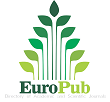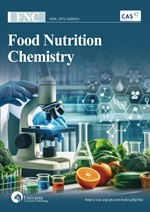Electrochemical reduction of CO to liquid C2+ with high Faradaic efficiency of amorphous CuO hybrid material wrapped in carbon and silica
DOI:
https://doi.org/10.18686/cest.v2i2.132Keywords:
carbon monoxide; electroreduction; C2+ products; Cu-based catalyst; silicaAbstract
Carbon monoxide (CO) is well recognized as one of the key intermediates for carbon dioxide (CO2) electrolytic reduction to C2+ products, which has been a hot research field recently. Developing an efficient catalyst that focuses on achieving C-C coupling is highly important for the production of C2+ products. In the present work, we present a feasible approach via the combination of electrostatic assembly and the hydrothermal method of coupling silicon polyanions and copper salts to build an amorphous copper hybrid material wrapped in carbon-silica, denoted as CuO@C-SiO2-X (where X means preparation temperature), as an efficient electrocatalyst for carbon monoxide reduction mainly to liquid C2+ products. The CuO@C-SiO2-X catalyst demonstrated excellent electrocatalytic activity and selectivity, especially to C2+ liquid products with the highest Faradaic efficiency of 81.5%. Additionally, the catalyst showed good stability. The presence of carbon enhanced electronic conductivity, and the silica protected the amorphous CuO from aggregation into crystalline structures. The present work not only provides an efficient catalyst for CO electrocatalytic reduction to liquid C2+ chemicals but also offers a protocol for building Cu-based catalysts with high selectivity to C2+ products in CO reduction.

Downloads
Published
How to Cite
Issue
Section
License
Copyright (c) 2024 Yue-Xia Yang, Zhen-Hong He, Hui-Hui Cao, Yong-Chang Sun, Yue Tian, Jiajie Liu, Weitao Wang, Huan Wang, Yang Yang, Zhao-Tie Liu

This work is licensed under a Creative Commons Attribution 4.0 International License.
References
1. Nitopi S, Bertheussen E, Scott SB, et al. Progress and perspectives of electrochemical CO2 reduction on copper in aqueous electrolyte. Chemical Reviews. 2019; 119(12): 7610-7672. doi: 10.1021/acs.chemrev.8b00705 DOI: https://doi.org/10.1021/acs.chemrev.8b00705
2. Zhu P, Wang H. High-purity and high-concentration liquid fuels through CO2 electroreduction. Nature Catalysis. 2021; 4(11): 943-951. doi: 10.1038/s41929-021-00694-y DOI: https://doi.org/10.1038/s41929-021-00694-y
3. Chen X, Chen J, Alghoraibi NM, et al. Electrochemical CO2-to-ethylene conversion on polyamine-incorporated Cu electrodes. Nature Catalysis. 2020; 4(1): 20-27. doi: 10.1038/s41929-020-00547-0 DOI: https://doi.org/10.1038/s41929-020-00547-0
4. Li J, Ozden A, Wan M, et al. Silica-copper catalyst interfaces enable carbon-carbon coupling towards ethylene electrosynthesis. Nature Communications. 2021; 12(1): 2808. doi: 10.1038/s41467-021-23023-0 DOI: https://doi.org/10.1038/s41467-021-23023-0
5. Rabinowitz JA, Kanan MW. The future of low-temperature carbon dioxide electrolysis depends on solving one basic problem. Nature Communications. 2020; 11(1): 5231. doi: 10.1038/s41467-020-19135-8 DOI: https://doi.org/10.1038/s41467-020-19135-8
6. Niu ZZ, Chi LP, Liu R, et al. Rigorous assessment of CO2 electroreduction products in a flow cell. Energy & Environmental Science. 2021; 14(8): 4169-4176. doi: 10.1039/d1ee01664d DOI: https://doi.org/10.1039/D1EE01664D
7. Li Y, Hu Y, Wu XF. Non-noble metal-catalysed carbonylative transformations. Chemical Society Reviews. 2018; 47(1): 172-194. doi: 10.1039/c7cs00529f DOI: https://doi.org/10.1039/C7CS00529F
8. Guo S, Liu Y, Huang Y, et al. Promoting electrolysis of carbon monoxide toward acetate and 1-propanol in flow electrolyzer. ACS Energy Letters. 2023; 8(2): 935-942. doi: 10.1021/acsenergylett.2c02502 DOI: https://doi.org/10.1021/acsenergylett.2c02502
9. Wang L, Nitopi S, Wong AB, et al. Electrochemically converting carbon monoxide to liquid fuels by directing selectivity with electrode surface area. Nature Catalysis. 2019; 2(8): 702-708. doi: 10.1038/s41929-019-0301-z DOI: https://doi.org/10.1038/s41929-019-0301-z
10. Zhu P, Xia C, Liu CY, et al. Direct and continuous generation of pure acetic acid solutions via electrocatalytic carbon monoxide reduction. Proceedings of the National Academy of Sciences. 2020; 118(2): e2010868118. doi: 10.1073/pnas.2010868118 DOI: https://doi.org/10.1073/pnas.2010868118
11. Chen C, Yan X, Liu S, et al. Highly efficient electroreduction of CO2 to C2+ alcohols on heterogeneous dual active sites. Angewandte Chemie International Edition. 2020; 59(38): 16459-16464. doi: 10.1002/anie.202006847 DOI: https://doi.org/10.1002/anie.202006847
12. Jouny M, Luc W, Jiao F. General techno-economic analysis of CO2 electrolysis systems. Industrial & Engineering Chemistry Research. 2018; 57(6): 2165-2177. doi: 10.1021/acs.iecr.7b03514 DOI: https://doi.org/10.1021/acs.iecr.7b03514
13. Luc W, Fu X, Shi J, et al. Two-dimensional copper nanosheets for electrochemical reduction of carbon monoxide to acetate. Nature Catalysis. 2019; 2(5): 423-430. doi: 10.1038/s41929-019-0269-8 DOI: https://doi.org/10.1038/s41929-019-0269-8
14. Li CW, Ciston J, Kanan MW. Electroreduction of carbon monoxide to liquid fuel on oxide-derived nanocrystalline copper. Nature. 2014; 508(7497): 504-507. doi: 10.1038/nature13249 DOI: https://doi.org/10.1038/nature13249
15. Yang C, Ko BH, Hwang S, et al. Overcoming immiscibility toward bimetallic catalyst library. Science Advances. 2020; 6(17): eaaz6844. doi: 10.1126/sciadv.aaz6844 DOI: https://doi.org/10.1126/sciadv.aaz6844
16. Ripatti DS, Veltman TR, Kanan MW. Carbon monoxide gas diffusion electrolysis that produces concentrated C2 products with high single-pass conversion. Joule. 2019; 3(10): 2581. doi: 10.1016/j.joule.2019.09.012 DOI: https://doi.org/10.1016/j.joule.2019.09.012
17. Jouny M, Luc W, Jiao F. High-rate electroreduction of carbon monoxide to multi-carbon products. Nature Catalysis. 2018; 1(10): 748-755. doi: 10.1038/s41929-018-0133-2 DOI: https://doi.org/10.1038/s41929-018-0133-2
18. Li J, Chang K, Zhang H, et al. Effectively increased efficiency for electroreduction of carbon monoxide using supported polycrystalline copper powder electrocatalysts. ACS Catalysis. 2019; 9(6): 4709-4718. doi: 10.1021/acscatal.9b00099 DOI: https://doi.org/10.1021/acscatal.9b00099
19. Zhao C, Luo G, Liu X, et al. In situ topotactic transformation of an interstitial alloy for CO electroreduction. Advanced Materials. 2020; 32(39): 2002382. doi: 10.1002/adma.202002382 DOI: https://doi.org/10.1002/adma.202002382
20. Wang L, Higgins DC, Ji Y, et al. Selective reduction of CO to acetaldehyde with CuAg electrocatalysts. Proceedings of the National Academy of Sciences. 2020; 117(23): 12572-12575. doi: 10.1073/pnas.1821683117 DOI: https://doi.org/10.1073/pnas.1821683117
21. Peng HJ, Tang MT, Halldin Stenlid J, et al. Trends in oxygenate/hydrocarbon selectivity for electrochemical CO2 reduction to C2 products. Nature Communications. 2022; 13(1): 1399. doi: 10.1038/s41467-022-29140-8 DOI: https://doi.org/10.1038/s41467-022-29140-8
22. Wang X, Wang Z, Zhuang TT, et al. Efficient upgrading of CO to C3 fuel using asymmetric C-C coupling active sites. Nature Communications. 2019; 10(1): 5186. doi: 10.1038/s41467-019-13190-6 DOI: https://doi.org/10.1038/s41467-019-13190-6
23. Tan X, Sun K, Zhuang Z, et al. Stabilizing copper by a reconstruction-resistant atomic Cu–O–Si interface for electrochemical CO2 reduction. Journal of the American Chemical Society. 2023, 145(15): 8656-8664. doi: 10.1021/jacs.3c01638 DOI: https://doi.org/10.1021/jacs.3c01638
24. Herzog A, Bergmann A, Jeon HS, et al. Operando investigation of Ag‐decorated Cu2O nanocube catalysts with enhanced CO2 electroreduction toward liquid products. Angewandte Chemie International Edition. 2021; 60(13): 7426-7435. doi: 10.1002/anie.202017070 DOI: https://doi.org/10.1002/anie.202017070
25. Hoang TTH, Verma S, Ma S, et al. Nanoporous copper–silver alloys by additive-controlled electrodeposition for the selective electroreduction of CO2 to ethylene and ethanol. Journal of the American Chemical Society. 2018; 140(17): 5791-5797. doi: 10.1021/jacs.8b01868 DOI: https://doi.org/10.1021/jacs.8b01868
26. Yang R, Zeng Z, Peng Z, et al. Amorphous urchin–like copper@nanosilica hybrid for efficient CO2 electroreduction to C2+ products. Journal of Energy Chemistry. 2021; 61: 290-296. doi: 10.1016/j.jechem.2020.12.032 DOI: https://doi.org/10.1016/j.jechem.2020.12.032
27. Dubey RS, Rajesh YBRD, More MA. Synthesis and characterization of SiO2 nanoparticles via sol-gel method for industrial applications. Materials Today: Proceedings. 2015; 2(4-5): 3575-3579. doi: 10.1016/j.matpr.2015.07.098 DOI: https://doi.org/10.1016/j.matpr.2015.07.098
28. Nallathambi G, Ramachandran T, Rajendran V, et al. Effect of silica nanoparticles and BTCA on physical properties of cotton fabrics. Materials Research. 2011; 14(4): 552-559. doi: 10.1590/s1516-14392011005000086 DOI: https://doi.org/10.1590/S1516-14392011005000086
29. Yin H, Yu XX, Li QW, et al. Hollow porous CuO/C composite microcubes derived from metal-organic framework templates for highly reversible lithium-ion batteries. Journal of Alloys and Compounds. 2017; 706: 97-102. doi: 10.1016/j.jallcom.2017.02.215 DOI: https://doi.org/10.1016/j.jallcom.2017.02.215
30. Ge Y, Shah ZH, Wang C, et al. In situ encapsulation of ultrasmall CuO quantum dots with controlled band-gap and reversible thermochromism. ACS Applied Materials & Interfaces. 2015; 7(48): 26437-26444. doi: 10.1021/acsami.5b09578 DOI: https://doi.org/10.1021/acsami.5b09578
31. Rahimabadi Z, Bagheri-Mohagheghi MM, Shirpay A. Synthesis, characterization, and the study of structural and optical properties of core/shell nanoparticles of SiO2@CuO for solar absorption collectors application. Journal of Materials Science: Materials in Electronics. 2022; 33(10): 7765-7780. doi: 10.1007/s10854-022-07928-0 DOI: https://doi.org/10.1007/s10854-022-07928-0
32. Prakash J, Shekhar H, Yadav SR, et al. Synthesis and characterization of plant derived copper oxide nanoparticles and their application towards oxygen reduction reaction. ChemistrySelect. 2022; 7(1): e202103594. doi: 10.1002/slct.202103594 DOI: https://doi.org/10.1002/slct.202103594
33. Ding J, Popa T, Tang J, et al. Highly selective and stable Cu/SiO2 catalysts prepared with a green method for hydrogenation of diethyl oxalate into ethylene glycol. Applied Catalysis B: Environmental. 2017; 209: 530-542. doi: 10.1016/j.apcatb.2017.02.072 DOI: https://doi.org/10.1016/j.apcatb.2017.02.072
34. Dar MA, Kim YS, Kim WB, et al. Structural and magnetic properties of CuO nanoneedles synthesized by hydrothermal method. Applied Surface Science. 2008; 254(22): 7477-7481. doi: 10.1016/j.apsusc.2008.06.004 DOI: https://doi.org/10.1016/j.apsusc.2008.06.004
35. Sahai A, Goswami N, Kaushik SD, et al. Cu/Cu2O/CuO nanoparticles: Novel synthesis by exploding wire technique and extensive characterization. Applied Surface Science. 2016; 390: 974-983. doi: 10.1016/j.apsusc.2016.09.005 DOI: https://doi.org/10.1016/j.apsusc.2016.09.005
36. Li H, Ban L, Wang Z, et al. Regulation of Cu species in CuO/SiO2 and its structural evolution in ethynylation reaction. Nanomaterials. 2019; 9(6): 842. doi: 10.3390/nano9060842 DOI: https://doi.org/10.3390/nano9060842
37. Wang W, Liu Z, Liu Y, et al. A simple wet-chemical synthesis and characterization of CuO nanorods. Applied Physics A: Materials Science & Processing. 2003; 76(3): 417-420. doi: 10.1007/s00339-002-1514-5 DOI: https://doi.org/10.1007/s00339-002-1514-5
38. Raimondi F, Geissler K, Wambach J, Wokaun AF. Hydrogen production by methanol reforming: Post-reaction characterisation of a Cu/ZnO/Al2O3 catalyst by XPS and TPD. Applied Surface Science. 2002; 189(1-2): 59-71. doi: 10.1016/S0169-4332(01)01045-5 DOI: https://doi.org/10.1016/S0169-4332(01)01045-5
39. Yang J, Yuling L, Penghe Z, et al. Chemical thermodynamic and catalytic mechanism analysis of Cu-BTC-derived CuOx/C catalyst for selective catalytic reduction (SCR). Molecular Catalysis. 2022; 531: 112710. doi: 10.1016/j.mcat.2022.112710 DOI: https://doi.org/10.1016/j.mcat.2022.112710
40. He ZH, Li CC, Yang SY, et al. Electrocatalytic CO2 reduction to ethylene over CuOx boosting CO2 adsorption by lanthanide neodymium. Catalysis Science & Technology. 2023; 13(23): 6675-6684. doi: 10.1039/d3cy00893b DOI: https://doi.org/10.1039/D3CY00893B
41. Ji Y, Guan A, Zheng G. Copper-based catalysts for electrochemical carbon monoxide reduction. Cell Reports Physical Science. 2022; 3(10): 101072. doi: 10.1016/j.xcrp.2022.101072 DOI: https://doi.org/10.1016/j.xcrp.2022.101072
42. Mu G, Mu D, Wu B, et al. Microsphere-like SiO2/MXene hybrid material enabling high performance anode for lithium ion batteries. Small. 2019; 16(3): 1905430. doi: 10.1002/smll.201905430 DOI: https://doi.org/10.1002/smll.201905430
43. Feng X, Jiang K, Fan S, et al. A direct grain-boundary-activity correlation for CO electroreduction on Cu nanoparticles. ACS Central Science. 2016; 2(3): 169-174. doi: 10.1021/acscentsci.6b00022 DOI: https://doi.org/10.1021/acscentsci.6b00022
44. Bertheussen E, Hogg TV, Abghoui Y, et al. Electroreduction of CO on polycrystalline copper at low overpotentials. ACS Energy Letters. 2018; 3(3): 634-640. doi: 10.1021/acsenergylett.8b00092 DOI: https://doi.org/10.1021/acsenergylett.8b00092
45. Chen R, Su H, Liu D, et al. Highly selective production of ethylene by the electroreduction of carbon monoxide. Angewandte Chemie International Edition. 2019; 132(1): 160-166. doi: 10.1002/ange.201910662 DOI: https://doi.org/10.1002/ange.201910662
46. Coelho FMB, Botelho AM, Ivo OF, et al. Volumetric mass transfer coefficient for carbon monoxide in a dual impeller stirred tank reactor considering a perfluorocarbon–water mixture as liquid phase. Chemical Engineering Research and Design. 2019; 143: 160-169. doi: 10.1016/j.cherd.2019.01.013 DOI: https://doi.org/10.1016/j.cherd.2019.01.013
47. Grosse P, Yoon A, Rettenmaier C, et al. Dynamic transformation of cubic copper catalysts during CO2 electroreduction and its impact on catalytic selectivity. Nature Communications. 2021; 12(1): 6736. doi: 10.1038/s41467-021-26743-5 DOI: https://doi.org/10.1038/s41467-021-26743-5
48. Yang PP, Zhang XL, Liu P, et al. Highly enhanced chloride adsorption mediates efficient neutral CO2 electroreduction over a dual-phase copper catalyst. Journal of the American Chemical Society. 2023; 145(15), 8714-8725. doi: 10.1021/jacs.3c02130 DOI: https://doi.org/10.1021/jacs.3c02130
49. Guo PP, He ZH, Yang SY, et al. Electrocatalytic CO2 reduction to ethylene over ZrO2/Cu-Cu2O catalysts in aqueous electrolytes. Green Chemistry. 2022; 24(4): 1527-1533. doi: 10.1039/d1gc04284j DOI: https://doi.org/10.1039/D1GC04284J




.jpg)
.jpg)

